人教版新目标初中英语八年级上册Could you please clean your room教案3篇
-
- 页数:18页
- 字数:约 20205 字
- 大小:134.50KB
- 格式:.doc
- 版本:Office2016及以上版本
- 作者:曼达林演示
Could you please clean your room教案3篇
Could you pleaseclean your room?教案一
Could you please clean your room?Period 1
一、 教学内容Section A 1a----1c
二、 教学目标
1.学习词汇do the dishes, make the bed, take outthe trash, fold the clothes, do the laundry, sweep the floor, clean the livingroom.

2.句型 Could you please clean your room? Yes,sure.
三、 教学准备学生预习本单元所有的词汇多媒体课件活动表奖品
四、 教学过程
Pre-task
1.Warming up
Enjoyourselves. Watch cartoon Cinderella. 看动画片段《灰姑娘》导如入本课话题和新词汇“chores”美丽善良的鬼姑娘因继母的嫉妒,每天得做所有的家务。片段的主题使学生联想到本课的话题。
2.learnnew words and phrases
Look!What is she / he dong? 看图学习动词词组do chores, do the dishes, make the bed,take out the trash, fold the clothes, do the laundry, clean the living room.
3.Guessing game.What is she doing ?
4.Pair work. 1a, Do you do these things at home? Write “Y” for “yes” and “N” for “no”.
5.Listening . 1b , Peter’s chores or Mom’s chores?
理解目标语Could you please clean your room? Yes,sure.
Write “M” for Mom’s chores, “P” for Peter’schores in the chart.
6.Pairwork
Lookat the picture,Ask your partner to do the chores that you see.
7.InterviewWho is the most able at home?
1)What chores do you do at home? How often do youdo the chores? Work in four, intervieweach of the students in the group, fill in the chart.
2)Then one student make a report to the class. “In my group…. Does the dishesevery day,…We think … is the most able one in our group.”
3)颁奖。给每个小组里的最能干者发奖。适时给学生爱劳动,爱父母的教育
8.总结本节课的教学重点。
9.Homework
Readthe words and phrases you learn today.
makea dialogue between you and your parent about doingthe chores.
活动表见PowerPoint 16、17、24、25。
五.教学反思
本节课主要谈论家务,话题贴近生活,,,在热身阶段, 以灰姑娘的动画片段导入动词词组,猜图游戏使词汇得到巩固,为下面的活动做好铺垫。新词汇结合学生的生活实际, 掌握运用target language礼貌提出请求, 并使学生受到爱劳动的教育..是本课的重点.。
Couldyou please clean your room?
Period2
一、 教学内容Section A 2a-4
二、 教学目标
1. 词汇:stay out late, work on the computer,get a ride, use the car, go to a meeting.
Hateto do /dong sth 。区别make与do的用法
2. 礼貌地征求许可:
CouldI please use your computer? Sorry, you can’t..
CouldI please watch TV?Yes, you can. But you have to clean your room first..
3.表达看法:
Ilike doing dishes because it’s relaxing, but I hate to do…because it’s boring.
三、 教学准备课件卡片小奖品
四、 教学过程。
1. Warming up
Game“Chain drill”.
运用上节课的target language“Could you please do…?”依次问答,其中的动词短语不能重复 ,复习动词短语。
2.Fillin the blanks with “make”and ”do”. 3a
3.Choresthat you like or dislike,3b
1) 呈现 like doing/to do, hate doing
2)Make a list of chores that you like and dislike.
3)Pairwork.谈论喜欢和不喜欢的家务,并表达自己的看法。
A:Doyou like doing dishes?
B:Yes,I like …because it’s relaxing,
No,I hate to do…because it’s boring.
4.Listening. 2a
1)Peterask his father if he can do four things. Check “yes” or “no”
2)Listenagain, Why does Peter’s father say “no”
Drawlines to the reasons in the chart.
5. Present target language
由听的活动2a 引入target language:
A: Could I please get a ride? B:Yes, you can.
A: Could I please get a ride? B:Sorry, you can’t, I have to go to a meeting.
6. Game.Sorry! I can’t!
Playthe game in 4.
7.Groupwork. (小组为灰姑娘动画片段配音)
(One day, the king invited all the girls to the great party. Herstep mother and her two sisters were going, She wanted to go very much, so sheasked her mother“…?” and what’s her mother’s answer?
“Could I go to the party? No, you can’t.? / Sure, you can. Butyou have to do all the chores first. Hahaha!…”)
8.Who’s the luckiest?
1)一个学生扮演仙女,其他学生展开想象,向仙女礼貌地提出自己的梦想. 请求帮助;运用target language “Could I please…?或者Could you please...?”
2)看仙女帮谁实现的梦想最多,选出前几名,那就是最今天的幸运之星。颁奖。
3)德育渗透:
Isthere really a fairy in the world? We must try our best to make our dreams cometrue.
9.Grammar focus
10.Homework.
CouldI go to the party?The concert? / the football game?…
假如今晚你想去看球赛或者音乐会或做其他你想做的事,你请求父母的许可。写一段对话。
教学反思
本课以灰姑娘的故事为线索,围绕“chores”这个话题, 礼貌地征求对方的许可。以游戏导入,复习提出请求的句型Could you please …?谈论喜欢和不喜欢的家务,从听的活动自然过渡到本课的target language“Could I ..? ”,接着,为灰姑娘想参加舞会而被继母拒绝的无声片段的配音,为学生运用目标语提供了一个趣味平台。“幸运之星”的活动,每个学生向仙女提出帮助实现梦想,让学生熟练地综合运用Section A 部分的target language。最后渗透德育,,启发学生走向成功光有梦想不够,惟靠自己的努力!
Couldyou please clean your roomPeriod 3
一、教学内容Section B 1a-2c
二、教学目标
1.学习词汇 invite my friends to …,buy some drinksand ,snacks, borrow some money r, teenager disagree
2.掌握句型 .Could you please buy some drink andsnacks? Sure. / Yes, I can.
Could I borrow youmoney? Yes, you can.. Sorry, you can’t.
3.难点; 综合的运用单元的目标语针对实际情景解决问题.
三、教学准备
复习动词短语,并且预习生词, 游戏用的卡片小奖品
四、教学过程
1. 游戏.
学生两人一组,代表所在的大组, 相对而立, 老师展示课前准备好卡片,卡片上写着动词词组, 一学生表演动作,另一学生在十秒内猜测词组, ,根据猜对的词组个数,评出挑战成功的组. 这个游戏的目的是复习所学的动词短语..打好脚手架架.
sweepthe floor, fold the clothes, clean the floor, cook, make the bed, buy somedrinks and snacks,take out the trash, wash the car, invite your friendsto …等,
2.Discussion
(在屏幕上展示出刚才的动词短语) .,
1) 1a What can teenagers ask their parents to do? What do parentsask their teenagers to do? 学习用I agree/ disagree 表示自己的观点.
T:Come to the front ,talk about your ideas.(.这个任务地目标运用词汇进行表达,同时渗透了对学生爱的教育,,爱父母,爱家庭,爱劳动.)
A:Ithink teenagers …
B:Iagree./ I don’t agree(disagree). I think …
2).Sally’s weekend.
Ask:What chores does Sally do on weekends? What do you think of Sally? Then Showsome photos of Sally.
3.A game
Practicewith“Could you please…?”“Could I …?”将课前准备的双色卡片(如:红/蓝)分发给学生,卡片以字母编号,同一编号的有两张,上面有简笔画,规定获得红色卡片的学生先发问,根据卡片上的简笔画回答。
Example:
A:Could you please clean the floor?
A2:Sure! But I have to do my homework first.
B: Could I have a digitalcamera?
B:Sorry, you can’t. It’s too dear..
Or
B:Could I borrow some money from you?I want to buy a camera. It’s 2000RMB.
B: Sorry, I don’t have so much money.
4.Listening.
1)2aListen and check the things you hear..
2) 2b Listen again., and fill in the chart.
Whatis Sandy’s mother going to do ?
Whatis Sandy going to do?
Whatare Sandy and Dave going to do?
3)Listen toHappy birthday song..
5.Group work. Make a telephone invitation and ask for help. (小组继续比赛)
If you are sandy,, you want to invite you goodfriends to come to you party, and you need their help, too..Make a list ofthings you want to buy and to do first, then discuss in group,act it out..
让学生进行评价.评出有特色的“最佳表演”“最佳创意”“最…”小组,给予奖励。
6.总结本课的target language.
7.Homework.
Inviteyour friends to have a picnic with you, and ask for their help to prepare forthe picnic.. make a conversation.
教学反思
如何激发学生的兴趣, 使他们主动积极地参与活动,开展合作学习, 使课堂充满活力,使设计的每个任务产生实效, 这是任务型教学中的首要问题. 本节课开展小组竞赛, 任务链为:游戏热身( 巩固词汇), 讨论(学习运用句型), 表演(综合运用)等活动, 逐步递进, 从简到难, 从谈论Sally 的周末, 到谈自己一周里所干的家务,电话邀请和请求帮助 ,都是来自现实生活的话题, 极具真实性. 为学生综合表达提供了丰富的素材.让学深入、让学生参与过程的评价体现了以学生为主体的原则.
Couldyou please clean your room?Period 4
一、教学内容Section B3a –3c & self check
二、教学目标
1.学习词汇 take care of, forget to do, feed thedog, move to a new house, take the dog for a walk
2.学习写留言条获得朋友的帮助。.
3.难点; 综合运用单元目标语,针对实际情景解决问题.
三、教学准备复习词汇和句型,预习3-4,some paper
四、教学过程
1. warming up.
1) Memory challenge. 复习词汇和Target language
Tom’sweek.
Studentslook at the chart for only one minute,then the chart is covered, Students saywhat Tom does on weekdays and weekends.
2)Do1 inself check
2. . 3a Reading
1).Question: Do you have a dog or a bird ?
How do you take care of it? Discus in pairs.
2)Readthe e-mail message. Quickly . in 3a.
Whatdoes Thomas ask Nancy to do?
3)词汇分类.Which things are about food? Cleaning? Exercise?
4)学习写求助的留言的方式法.
3.Help Sandy Complete the e -mail message. (3b and 3c),展示优秀的作品.
4.Groupwork. “Help Wanted”
1)给出不同的话题,让每个小组抽取一个话题,合作讨论, 写留言条寻求帮助.
2)然后将条子贴在黑板上,让每组学生代表上来,找到自己能做的事,并和那个小组进行对话表演 .
5.总结.
6.homework
ReviseUnit 11, complete the message in2ofself check.,
教学反思
本节课在复习单元词汇和句型的基础上, 进一步学会运用目标语进行写的训练, 是能力目标的体现. 不同的话题拓展到生活的各个方面, ,给学生综合运用目标语,提供了一个广阔的平台, 使学生能运用语言知识解决实际问题.
Couldyou please clean your room?Period 5
课外阅读和,知识的拓展)(教案略)
Could you pleaseclean your room?教案二
教学目标:
1.学习谈论家务
2.提出请求;申请许可
3.能够口头或书面描述日常活动
情感目标:
培养学生热爱劳动,帮助他人的传统美德。
教学重点和难点:
1. "Could " for polite requests
2. "Could" for permission.
3. "Make" versus "do"
课前准备:
1.教学器材:Recorder; tape, computer, pictures, acourseware, handout, etc.
2.教学课件:Cartoon pictures; Flash on PC
教学设计:
学习内容
学生活动
教师活动
表示做家务的动词及短语:do the dishes; sweep the floor; take out the trash; make the bed; fold the clothes; do the laundry; clean the living room; etc.
1.通过对话过程了解、体会,并最终掌握日常家务、杂物的表达法。
引导、启发、教授需学内容。
2.提出请求;申请许可:
"Could " for polite requests
"Could" for permission.
2.通过听录音、回答问题,了解、体会并最终掌握句型。
放录音;启发、提示问题及答语。
3.阅读→迁移→辨析make及do(读、写、文化差异)。
阅读短文→迁移前面听力感应→辨析文中所缺行为动作make及do→填入适当动词并使之形成一篇完整文段。
3.引导、提示动词辨析;带读课文或放录音。提示文化差异。
能够用口头或书面描述日常活动及家务:buy some drinks and snacks; borrow some money; invite my friends to a party; go to the store; use your CD player; etc.
4.利用本单元所学日常活动及做家务的动词和短语,就图片或文字所提供的信息进行讨论。可发散思维,或用学过的知识,或用课外知识,扩展话题。
之后,整理词语,写成文段。
4.检查学生讨论图片或文字的情况——句型、短语、动词形式是否正确;指导并落实学生写作情况。
教学过程设计:
Task One: Talk about chores
Goal:Learn theexpressions of daily chores by means of discussion
Step 1. Brainstorm:What chores do you have at home? Who often does the chores?
How often do your family do them? (Ask a fewstudents to answer the question orally.)
Step 2. Do you dothese chores at home: Section A: 1a
Step 3. Help thestudents form the groups of three people and make sure one is the kid, theother two are mother and father.
Chores
Who
How often
do the dishes
mother
every day
cook
father
twice a month
…
…
…
…
…
…
…
…
…
Step 4. Ask the"kid" in each group to fill in the chart according to the realsituation in his or her home.
Step 5. Is it fair foreveryone in the family? Try to role-play the discussion in groups.
E.g. Kid: Could you please cook twice aweek, dad? Mom is too tired. She needs help.
Father: Sure. But could youwash your own clothes?
Kid: Sorry, I cant. I dont havetoo much time.
Task Two: Make polite requests and askfor permission
Goal: Learn the structures of makingrequests and asking for permission by means of listening
Step 1. Brainstorm:What kind of difficulties will a person, who is hurt at school?
(Write the students ideas on the board)
Step 2. Listen to thetape, trying to follow the structures in it: Section A: 1b; 2a & 2b
Step 3. Ask a studentto pretend Jack who was hurt, and tell him to ask for helps from his classmatesin the front. The rest of the class try to give him differentanswers.
E.g. --- Maria, could you please move thechair for me?
---Sure, Id love to.
---Annie, could you please help me takeEnglish notes?
---Sorry, I cant. I have to goto the teachers office first. I can help you later.
Task Three: Express daily chores inshort passages by means of talking, reading and writing
Goal: Have the ability of expressingdaily chores not only orally but also in written English
Step 1. Help thestudents form groups of three.
Step 2. Role-play theconversations in groups.
Step 3. Present someconversations to the class.
E.g. Tom: Could I have an ice cream?
Father/Mother: …
Tom: Could I take the small planethere?
Father/Mother: …
Step 4. Learn moreexpressions of daily chores by reading an e-mail, answer it and try to write anew one: Section B: 3a, 3b &3c.
教学点评与反思:
一、设计思路:
课前讨论为任务一的完成做了铺垫。接着,通过听,了解句型,并初步掌握如何表达谈论家务,提出请求及申请许可。最后,学生又通过阅读进一步巩固本单元所学的句型,并通过迁移进行仿写,最后以自主写作为最终目标。这样,学生既学会了如何描述日常家务或活动,又可以学会发散思维,以扩展知识。同时,学生的口头及书面表达能力也可随之提高。
任务型课程的设计要自始至终体现任务的要求与特点,尤其要确保任务的设计与完成是从简单重复逐步过渡到真实或接近真实。基于这一要求与特点,通过完成这一系列任务,既使学生学会了如何表达日常家务,提出请求或申请许可;又渗透了对学生的教育:通过完成任务培养学生热爱劳动的美德。
二、课后反思:
不足之处:虽说课堂上以学生为主体了,但老师的主导作用也需体现:本节课教师启发的还不完全到位;激情不够。
可取之处:全方位的训练了学生的听、说、读、写的能力,以及热爱劳动的情感教育。
Could you pleaseclean your room? 英文教案
I. Teaching aims and teaching demands:
In this unit students learn to make polite requests andask for permission .
II. Teaching key and difficult points:
A.Vocabulary
do the chores, do the dishes ,sweep the floor, take outthe trash, fold the clothes, clean the living room , do the laundry, wash thecar,
buy some drinks and snacks, borrow some money, inviteyour friends teenager, hate, take care of , feed
Recycling: make the bed, say out late, use the car ,get aride, cook, clean, fun, boring, relaxing, CD player
B. Target language
Could you take out the trash? Sure.
Could I borrow the car?
Sorry, but I need it . I have to go to a meeting.
I have to make the bed and do the laundry.
C.Structures
Could for a polite request
Could for permission
Make versus do
III. Teaching methods: Audio-lingual methods and PPP
IV. Teaching aids:a tape recorder
V. This unit is divided into five periods.
Period I
I. Teaching aims and demands:
Students learn to make polite requests and ask forpermission.
II. Teaching key and difficult points:
A.Vocabulary
do the dishes , sweep the floor, take out the trash, makeyour bed, fold your clothes, clean the living room, make the bed
B.Target language
Could you sweep the floor ? Yes , sure.
III. Teaching methods: Audio-lingual methods and PPP
IV. Teaching aids:a tape recorder
V. Teaching procedure
Step 1. Revision
Say to the students, I want to borrow a pen. What can Ido ?
Please give me your pen. Pass your pen to me, please.
Say ,There is another way polite way to ask forsomething.
Write Could you please give me your pen? on the board.
Repeat the question.
I am going to go home .OK?→ Could I go home now? (morepolite)
Can I borrow your bike? → Could I borrow your bike?
Can I use your dictionary?
Step 2. Presentation
This activity reviews earlier vocabulary and introducesome new words.
Task 1 . Point to the items under theheading Chores in the chart .Ask the students what the chores means.(A chore isa job you do at home.)Then point to the items again and read each one to theclass .Ask the students to explain the each chore in their own words and say ifthey do it or not. For example , a student might say, After we eat breakfastthe dishes are dirty. We have to do the dishes. Do the dishes is the same aswash the dishes.
Task 2. Then read the instructions.
Task 3. Ask the students to find a partner.
Task 4. Find out which two chores most students do athome.
Read and repeat the phrases.
Step 3. Understanding the target language in spokenconversation.
Task 1. Read the instructions.
Task 2. Play the recording the first time. Students onlylisten.
Task 3. Play the recording a second time. And fill in thechart. Then check the answers.
Step4. Pairwork
Ask the students to look at the picture above and askyour partner to do the chores that you see.
Homework
1.Make up your ownconversations.
2.Make six sentences with the target language.
Period Ⅱ
I. Teaching aims and demands :
Students learn to make polite requests and ask forpermission.
II. Teaching key and difficult points:
A.Vocabulary
stay out late, use the car, get a ride, go to a meeting,clean your room,
您可能喜欢的文档
查看更多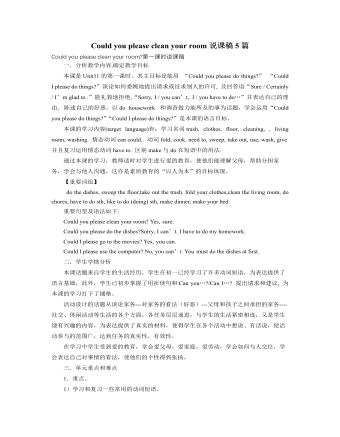
人教版新目标初中英语八年级上册Could you please clean your room说课稿5篇
- 页数:15页
- |大小:95.00KB
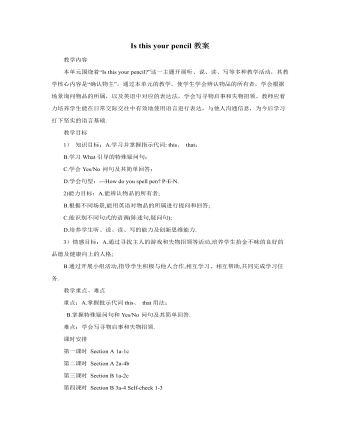
人教版新目标初中英语七年级上册Is this your pencil教案
- 页数:18页
- |大小:94.00KB
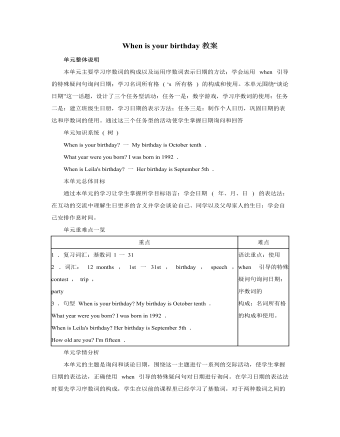
人教版新目标初中英语七年级上册When is your birthday教案
- 页数:15页
- |大小:123.00KB
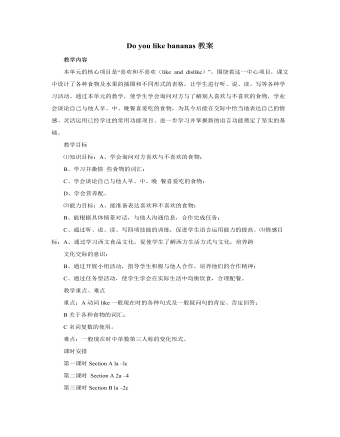
人教版新目标初中英语七年级上册Do you like bananas教案
- 页数:14页
- |大小:94.00KB

人教版新目标初中英语八年级上册Can you come to my party教案3篇
- 页数:17页
- |大小:98.50KB
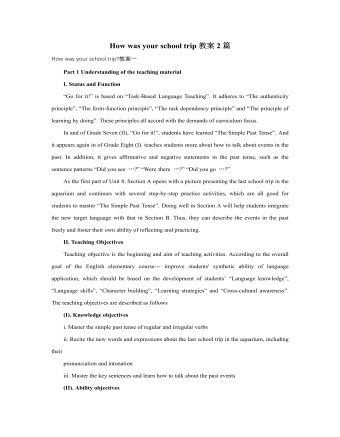
人教版新目标初中英语八年级上册How was your school trip教案2篇
- 页数:21页
- |大小:182.50KB

人教版新目标初中英语八年级上册How often do you exercise教案2篇
- 页数:21页
- |大小:182.50KB
热门课件教案
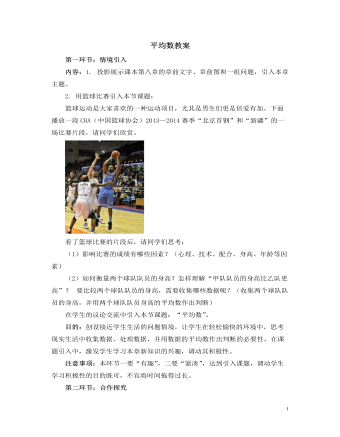
北师大初中数学八年级上册平均数2教案
- 页数:5页
- |大小:1M
- 课件教案
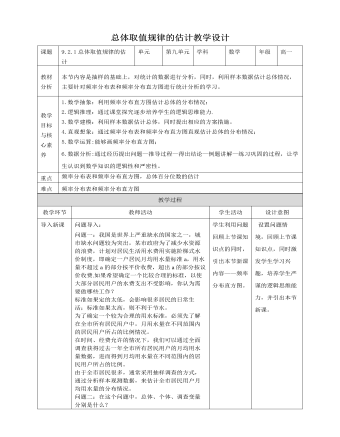
人教A版高中数学必修二总体取值规律的估计教学设计
- 页数:12页
- |大小:821.00KB
- 课件教案
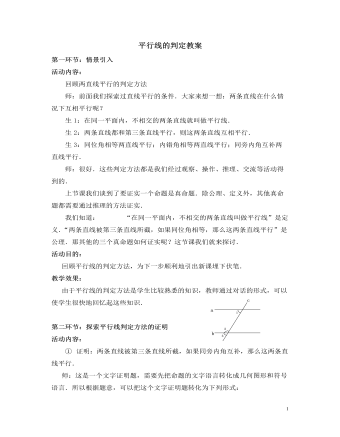
北师大初中数学八年级上册平行线的判定2教案
- 页数:5页
- |大小:1M
- 课件教案

人教A版高中数学必修一诱导公式教学设计(1)
- 页数:9页
- |大小:180.22KB
- 课件教案
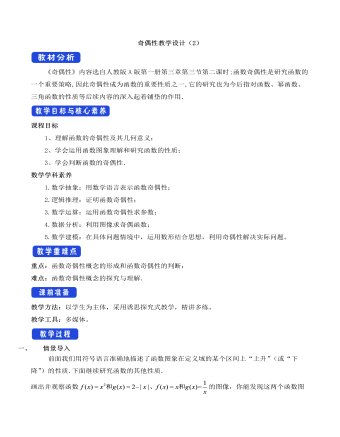
人教A版高中数学必修一奇偶性教学设计(2)
- 页数:7页
- |大小:179.77KB
- 课件教案
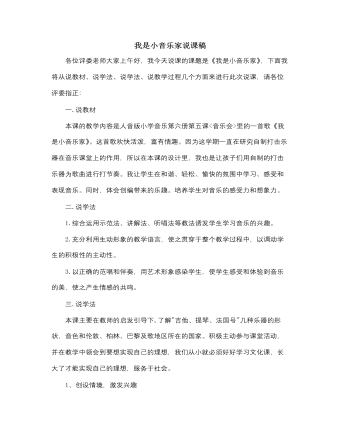
人音版小学音乐三年级下册我是小音乐家说课稿
- 页数:3页
- |大小:36.00KB
- 课件教案
今日更新

5月份主题教育工作情况总结汇报
- 页数:3页
- |大小:136.87KB

××县招商局2024年上半年工作总结
- 页数:12页
- |大小:142.54KB
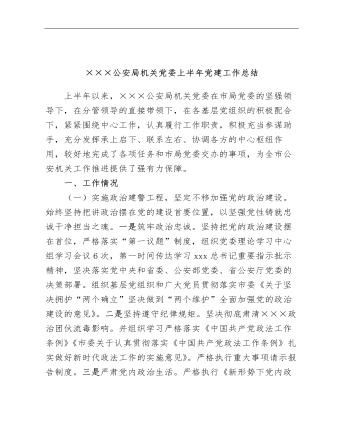
×××公安局机关党委上半年党建工作总结
- 页数:7页
- |大小:186.25KB

《2019—2024年全国党政领导班子建设规划纲要》实施情况的工作总结3800字
- 页数:6页
- |大小:29.16KB
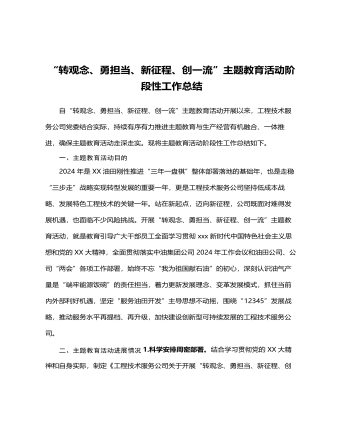
“转观念、勇担当、新征程、创一流”主题教育活动阶段性工作总结
- 页数:3页
- |大小:22.76KB

“四零”承诺服务创建工作总结
- 页数:5页
- |大小:39.83KB





